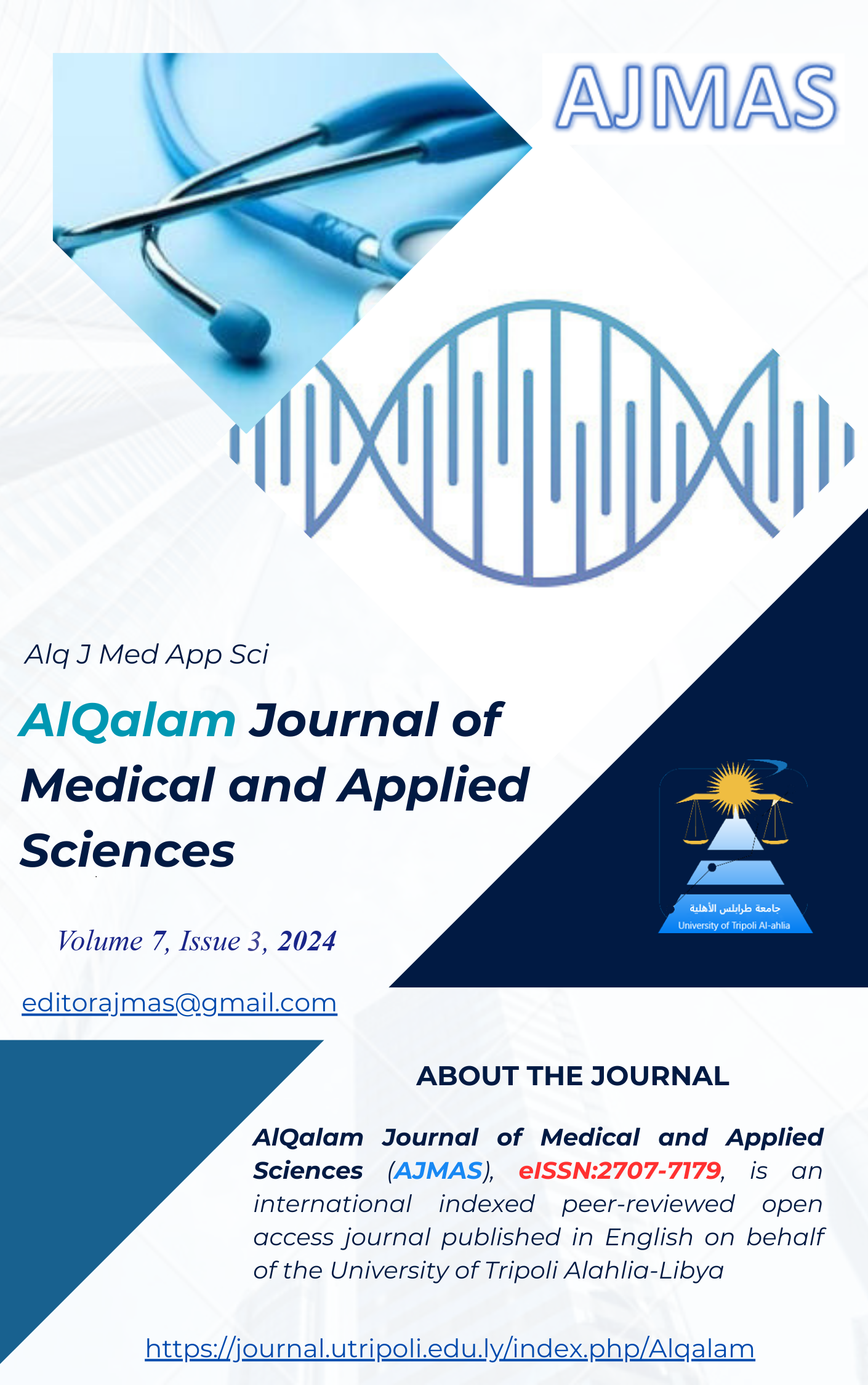Synthesis, Characterization, Antimicrobial Activity, DFT, Molecular Docking, and ADMET of 4-Chlorophenyazolquniolin-8-ol and Its Metal Complexes
DOI:
https://doi.org/10.54361/ajmas.247320Abstract
In this study, we prepared 4-chlorophenylazoquinoline, a derivative of 8-hydroxyquinoline, with Mn(II), Co(II), Ni(II), Cu(II), and Zn(II) ions to create metal complexes. We used various physical and spectroscopic methods to characterize the compound and its metal complexes, including molar conductivity measurements, melting point analysis, elemental analysis, electronic absorption spectroscopy, mass spectrometry, magnetic resonance spectroscopy, infrared spectroscopy, and thermogravimetric analysis. The octahedral geometry of all prepared complexes has been confirmed. To assess the antimicrobial activity, we examined two types of bacterial strains and two types of fungal strains. The antimicrobial activity of the prepared compounds was observed, and the higher increase was observed in the copper complex. The compounds were studied computationally after optimizing the angles, lengths, and bonds using the basic set 6-31G(d,p)/LANL2DZ. The molecular docking study of the compounds with the Alzheimer's disease protein 4BDT showed significant activity in binding to the amino acids of HL, C1, C2, C3, C4, and C5 compounds, with affinity energies of -6.4, -6.9, -6.9, -6.7, and -7.2 kcal.mol-1 for the compounds, respectively. To evaluate the safety of the prepared compounds in different drug designs, we employed the ADMET study, reducing the risk of failure in advanced drug design stages. The results of the ADMET showed a relative decrease in the toxicity and carcinogenicity factor. However, there are indications of metabolic risk and cellular uptake, requiring further study.
في هذه الدراسة، قمنا بإعداد 4-كلوروفينيل أزوكينولين، وهو مشتق من 8-هيدروكسي كينولين لتحضير معقدات فلزية. لقد استخدمنا طرقًا فيزيائية وطيفية مختلفة لتوصيف المركب ومعقداته الفلزية، بما في ذلك قياسات الموصلية المولية، وتحليل نقطة الانصهار، والتحليل العنصري، وطيف الامتصاص الإلكتروني، وقياس الطيف الكتلي، وطيف الرنين المغناطيسي، وطيف الأشعة تحت الحمراء، والتحليل الوزني الحراري. تم تأكيد هندسة ثماني السطوح لجميع المعقدات المحضرة. لتقييم النشاط المضاد للميكروبات، قمنا بفحص نوعين من سلالات البكتيريا ونوعين من سلالات الفطريات. لوحظ النشاط المضاد للميكروبات للمركبات المحضرة، ولوحظت الزيادة الأعلى في معقد النحاس. تمت دراسة المركبات حاسوبياً بعد تحسين أطوال الزوايا والروابط باستخدام المجموعات الأساسية 6-31*G (d,p) \ LANL2DZ, . أظهرت دراسة الالتحام الجزيئي للمركبات التي تحتوي على بروتين مرض الزهايمر 4BDT نشاطًا كبيرًا في الارتباط بالأحماض الأمينية لمركبات HL وC1 و C2 و C3 و C4 و C5، مع طاقات تقارب -6.4 و -6.9 و -6.9 و -6.7 و -7.2 كيلو كالوري / مول للمركبات على التوالي. لتقييم سلامة المركبات المحضرة في تصميمات الأدوية المختلفة، استخدمنا دراسة ADMET، مما قلل من خطر الفشل في مراحل تصميم الأدوية المتقدمة. أظهرت نتائج ADMET انخفاضًا نسبيًا في عامل السمية والسرطان. ومع ذلك، هناك مؤشرات على وجود خطر أيضي وامتصاص خلوي، مما يتطلب مزيدًا من الدراسة
Downloads
Published
How to Cite
Issue
Section
License
Copyright (c) 2024 Najla Abduljalil, Saleh Bufarwa, Mustapha Belaidi, Reem El-Seifat, Abdulsalam Saleh, Marei El-ajaily

This work is licensed under a Creative Commons Attribution 4.0 International License.















